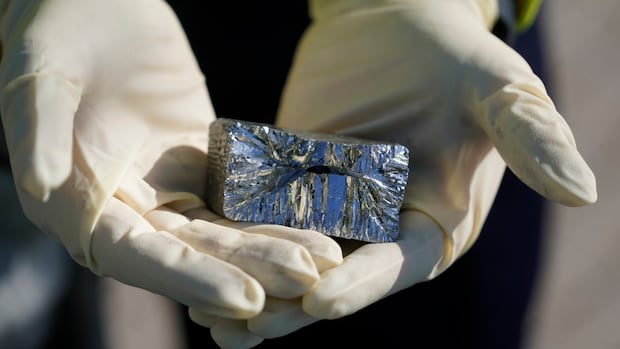What does your smartphone have in common with a solar panel, or an EV battery, or a piece of military equipment? They’re all made using critical minerals — an essential ingredient in powering the modern technology that we use every day.
“They’re absolutely the central thing for what I call the electro-digital age,” said Vince Beiser, author of Power Metal: The Race for the Resources That Will Shape the Future, in an interview with CBC’s The Current.
“This era that we’re moving into that’s going to be defined by renewably generated electricity and digital technology. Can’t make that stuff without critical metals.”
Some trade experts call critical minerals the “bedrocks” of a new era in technological advancement — not unlike how the invention of the steam engine during the first industrial revolution dramatically changed the world, powering boats, trains and factory machines.
The idea is that these elements are considered important for the transition to green energy and digital technology, or that they serve some kind of military function, explained Elizabeth Steyn, a professor of law at the University of Calgary who researches critical minerals.
CBC explains what critical minerals are and why there’s a global race for control of these precious resources.
What kind of critical minerals does Canada have?
“Historically, Canada has really been the world’s sort of top destination for mining companies and prospectors,” said Jacob Lorinc, a mining reporter at Bloomberg, in an interview with CBC’s Front Burner.
Canada has 34 critical minerals and metals on its list (some countries refer to them as “strategic minerals”). There are mines, refineries and projects dedicated to these minerals in every Canadian province and territory except P.E.I.
To get on the list, a mineral’s supply chain has to be at risk, and it has to have a “reasonable chance” of being produced in Canada. It also has to meet one of the following criteria:
It’s essential to Canada’s economic or national security.
It’s required for the transition to “to a sustainable low-carbon and digital economy.”
It helps Canada position itself as “a strategic partner” in the global supply chain.
It’s also important to note that within Canada’s broader list, there’s a bundle of 17 metals called “rare earth minerals” — or lanthanides, which are highly toxic and radioactive.
“Rare earths are a good example of how critical minerals are not necessarily rare, but they can be scarce,” said Steyn. While lanthanides are all over the earth’s crust, “they are found in such small quantities that it’s very difficult to find a place where we can actually mine them in a commercially feasible manner.”
Front Burner24:07Is Trump coming for Canada’s critical minerals?
The challenge with mining in Canada
Canada is one such place where mining scarce minerals is commercially feasible.
But some experts say this country hasn’t taken full advantage of…
Read More: The global race for critical minerals is on. Here’s why they’re the



